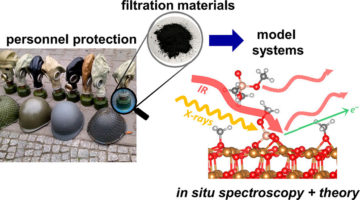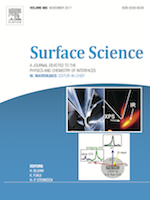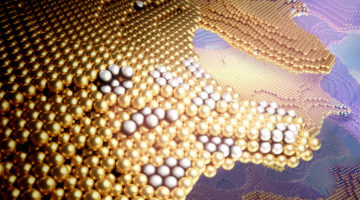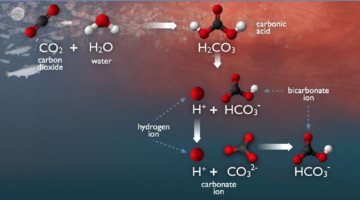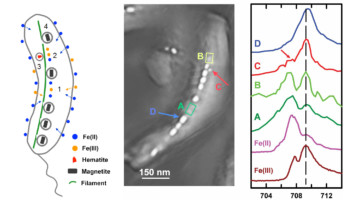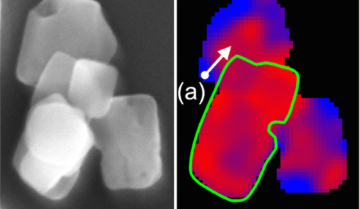Scientists have put the x-ray spotlight on composite materials in respirators used by the military, police, and first responders. The results provide reassuring news about the effectiveness of current filters and provide fundamental information that could lead to more advanced gas masks as well as protective gear for civilian applications. Read more »
CO Adsorption on Pd(100) Studied by Multimodal Ambient Pressure X-Ray Photoelectron and Infrared Reflection Absorption Spectroscopies
The first combined infrared spectroscopy and ambient-pressure XPS study was demonstrated at Beamline 11.0.2. The in situ vibrational and core-level spectroscopies in the Torr pressure range offer complementary information on the properties of surfaces and adsorbates while closing the pressure gap between laboratory measurements and applications. The multimodal spectroscopy also allowed the identification of the C 1s binding energy and quantification of an uncommon atop CO species on a Pd(100) surface. Read more »
A Closer Look at Dynamic Restructuring in Catalysts
Researchers have structurally and chemically “visualized” the surface of a silver–gold alloy as it reorganizes itself during catalytic activation. The insights gained from this methodology can lead to improved catalysts for energy-intensive industrial applications, thereby increasing efficiency and reducing waste. Read more »![]()
![]()
APXPS Finds Carbonate Reversal at Liquid Interfaces
Aqueous carbonate systems are central to many processes essential to life, from the blood buffer system to the global carbon cycle. Using APXPS, researchers probed the concentration of carbonates near an interface, finding a surprising reversal in the expected abundances as a function of depth. Read more »![]()
![]()
Ptychography of a Bacterium’s Inner Compass
Magnetotactic bacteria (MTB) synthesize chains of magnetic nanocrystals (magnetosomes) that interact with the Earth’s magnetic field like an inner compass needle, simplifying their search for optimum environments. Ptychographic spectra of magnetosomes from a marine MTB provides insight into how these inner compasses form. Read more »
Industrial-Academic Collaboration Gives Nanoscale Insight into Batteries
An industrial collaboration between Hummingbird Scientific and a team of researchers from the ALS, SLAC, Berkeley Lab, Stanford University, and other institutions has resulted in a new x-ray microscopy platform that gives scientists the ability to image nanoscale changes inside lithium-ion battery particles in real time as they charge and discharge. Insights obtained from the imaging platform have already provided surprising new insights and could help researchers improve batteries for electric vehicles as well as smart phones, laptops, and other devices. Read more »![]()
A Cleansing Rain Falls; a Soil-Filled Mist Arises
Rain’s reputation for cleansing the air may come with a caveat after new findings, including STXM and NEXAFS data, show that raindrops play a role in generating airborne organic particles. The findings could influence how scientists model our planet’s climate and future. Read more »
An Atomic-Level Understanding of Copper-Based Catalysts
Copper-based catalysts are widely used in chemical industries to convert water and carbon monoxide to hydrogen, carbon dioxide, and methanol. There are theoretical models used to explain this reaction, but a complete understanding of the process has been lacking. However, recent research at the ALS has shed light on the process, giving scientists key data about how copper-based catalysts function at the atomic level. Read more »![]()
![]()
Hewlett Packard Labs Gains Insights with Innovative ALS Research Tools
For the past eight years, Hewlett Packard Labs, the central research organization of Hewlett Packard Enterprise, has been using cutting-edge ALS techniques to advance some of their most promising technological research, including vanadium dioxide phase transitions and atomic movement during memristor operation. Read more »![]()
X-Ray Microscopy Reveals How Crystal Mechanics Drive Battery Performance
Recent findings at the ALS show that small crystal size is key to maintaining a battery’s performance and establish soft x-ray ptychography as an essential tool for studying chemical states in nanoparticles.
Read more »![]()
![]()
